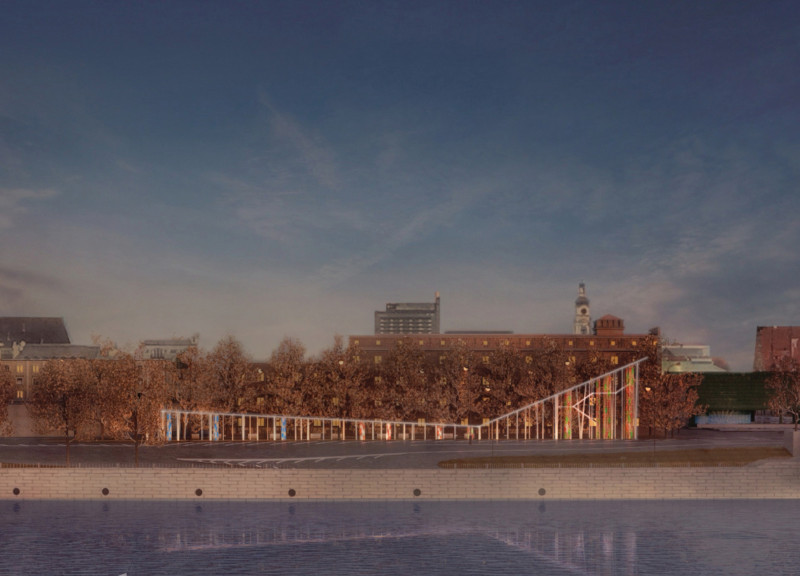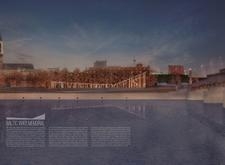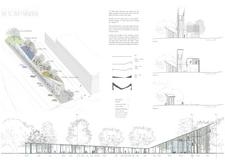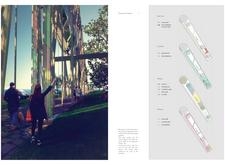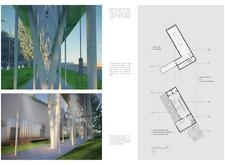5 key facts about this project
## Project Overview
Located in Tallinn, Estonia, the Baltic Way Memorial commemorates the peaceful protests that united the Baltic states on August 23, 1989. The memorial pays homage to the collective spirit of solidarity that characterized the Baltic Way, where approximately two million individuals formed a human chain spanning over 600 kilometers between the capitals of Estonia, Latvia, and Lithuania.
## Spatial Configuration and Engagement
The memorial incorporates three main parks—Püha Park, Daisy Park, and Rue Park—creating a landscaped environment that encourages visitor interaction. The design emphasizes a linear arrangement, with elevated tiers symbolizing the connection between cities. This tiered layout facilitates a sense of movement and engagement, capturing the dynamic character of the historical protest.
### Design Elements and Materiality
The design features a "Column Forest," characterized by slender, towering columns that evoke the metaphor of a forest, providing both structure and shaded areas for visitors. Elevated viewing platforms offer reflective spaces overlooking water, enhancing the emotional resonance of the site.
The materials used include concrete, which signifies permanence and strength; glass, allowing light to permeate the memorial space; wood in pathways and seating to introduce warmth; and steel for structural integrity. Colorful panels incorporated in the vertical elements symbolize the cultural vibrancy of the Baltic states. The design thoughtfully integrates existing trees, fostering a connection with the natural environment and enhancing the visitor experience through interactivity and reflection.


